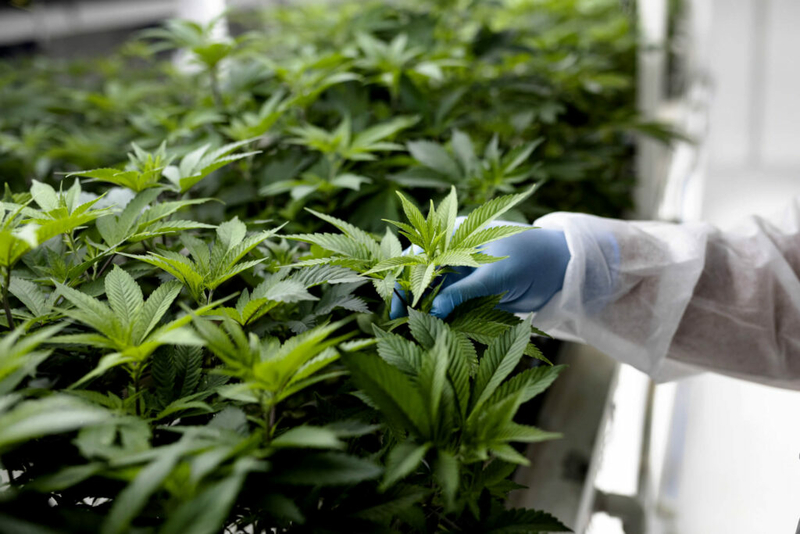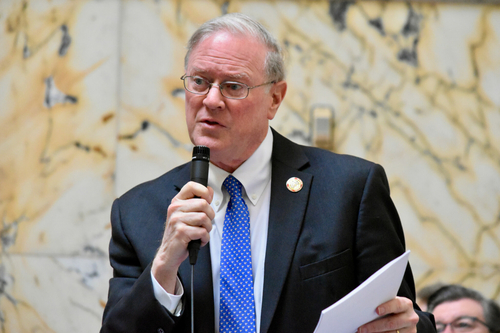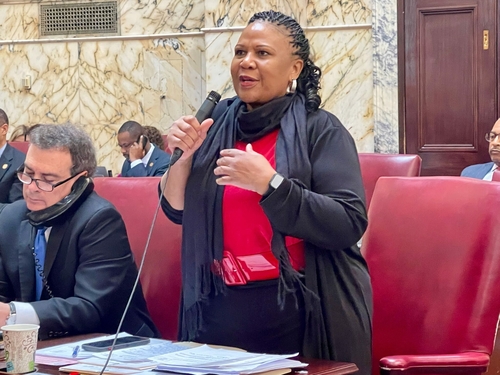Lawmakers consider adding millions of square-feet of cannabis growing capacity

Maryland lawmakers are poised to approve legislation creating the potential for enormous expansion of growing space for the state’s new medical and recreational cannabis market.
A bill awaiting final approval in the Senate would cap cannabis growing area — referred to as canopy — to a total that is roughly 23 times more than licensed growers are using now. Some worry that such an increase — should growers and the state fully maximize the potential — would depress prices and force operations out of Maryland’s nascent recreational cannabis market.

“What will happen?” asked Sen. Chris West (R-Baltimore County). “Is there someone in position to deal with this problem, if we end up having too much canopy and it’s driving the prices down and driving the operators out of business?”
West pointed to a study presented to lawmakers which estimated the state would need far less growing capacity than 22.5 million square feet — roughly equivalent to the square-footage of 300 typical Wegman’s grocery stores. It noted problems in the cannabis market in Massachusetts, which is experiencing a tanking market that some say is tied to a glut of cannabis.
“And that once again was at 3.2 million square feet of canopy — far less than the 22.5 million square feet that’s being authorized here in Maryland,” West said.
The Senate gave preliminary approval to Senate Bill 516 Thursday. It would establish licensing, regulatory and tax frameworks for implementing the state’s adult-use recreational cannabis industry. The bill includes several amendments from legislation passed by the House, which will need to be resolved.
The bill would limit the number of licensed growers to 75, with each allowed up to 300,000 square-feet of growing space.
“Our experience with medicinal cannabis, our experience looking at other states is that even with the maximum number that we’ve allowed, that we don’t expect that each one of the growers will get to that maximum amount,” said Senate Finance Committee Chair Melony Griffith (D-Prince George’s).

Maryland’s five-year old medical cannabis program places no limits on the size of grow facilities. There are no caps on production, according to Will Tilburg, executive director of the Maryland Medical Cannabis Commission.
And the state is seeing price drops.
The average consumer price per gram in Maryland fell in 19 of 20 months between April 2021 and Nov. 2022. During that time, the average price fell nearly 43% to $6.29 per gram, on average. It is the first time the average price for a gram of cannabis fell below $7 in the history of the five-year old program, according to data from the Maryland Medical Cannabis Commission.
During that same period, the commission reports increases in total sales in all three categories of cannabis products — infused and vape products and cannabis flower.
“We’ve seen this [price drops] across the country as markets in other states mature,” said Tilburg, adding that such decreases have benefited patients who rely on a product they pay for out of pocket.
The legislation working its way through the General Assembly contains a number of safety valves including an initial moratorium to hold current licensees to their existing growing area, tiered rollouts of licenses and market studies by regulators. Those studies will guide decisions on the actual number of licenses and growing capacity needed, Tilburg said.
“The cannabis industry in Maryland is still in its nascency,” said Tilburg. “In ’24 and ’25 there are likely to be changes based on how this rolls out.”
The state’s 18 operational licensed cannabis growers have more than 931,000 square-feet of combined indoor and outdoor growing space for mature plants, according to data provided by the commission.
Licensed growers have unused capacity, according to figures they reported in November to state regulators. The combined space used for growing represents just two-thirds of the more than 1.4 million square-feet available.
Existing licensees would have to convert to a new hybrid recreational-medical license issued by the state that comes with increased fees.
If lawmakers approve the cap on growing capacity at 300,000 square feet, Maryland’s cap would exceed the 3.2 million square feet grown in Massachusetts.
“They’re going to kill the market and put a lot of people out of business,” said David Rabinovitz, a cannabis entrepreneur and consultant in that state.. “A lot of people will lose money.”
Maryland lawmakers and industry experts used Massachusetts as a benchmark because the state’s population of 6.9 million is similar to Maryland’s 6.2 million people.
Massachusetts limits growers to 100,000 square feet. That state has seen price drops of 50% over the last year that are causing some large growing facilities to go dormant, said Rabinovitz.
Rabinovitz urged Maryland lawmakers to consider reducing the maximum growing capacity.
“I’d cut back for a whole bunch of reasons,” he said. “I might cut it back to 30,000 square-feet.”
Nine of the current 18 operational licensed growers already exceed Rabinovitz’s suggested cap.
Tilburg cautioned against comparing Maryland to other states.
“There really is no one-size-fits-all approach,” he said.








